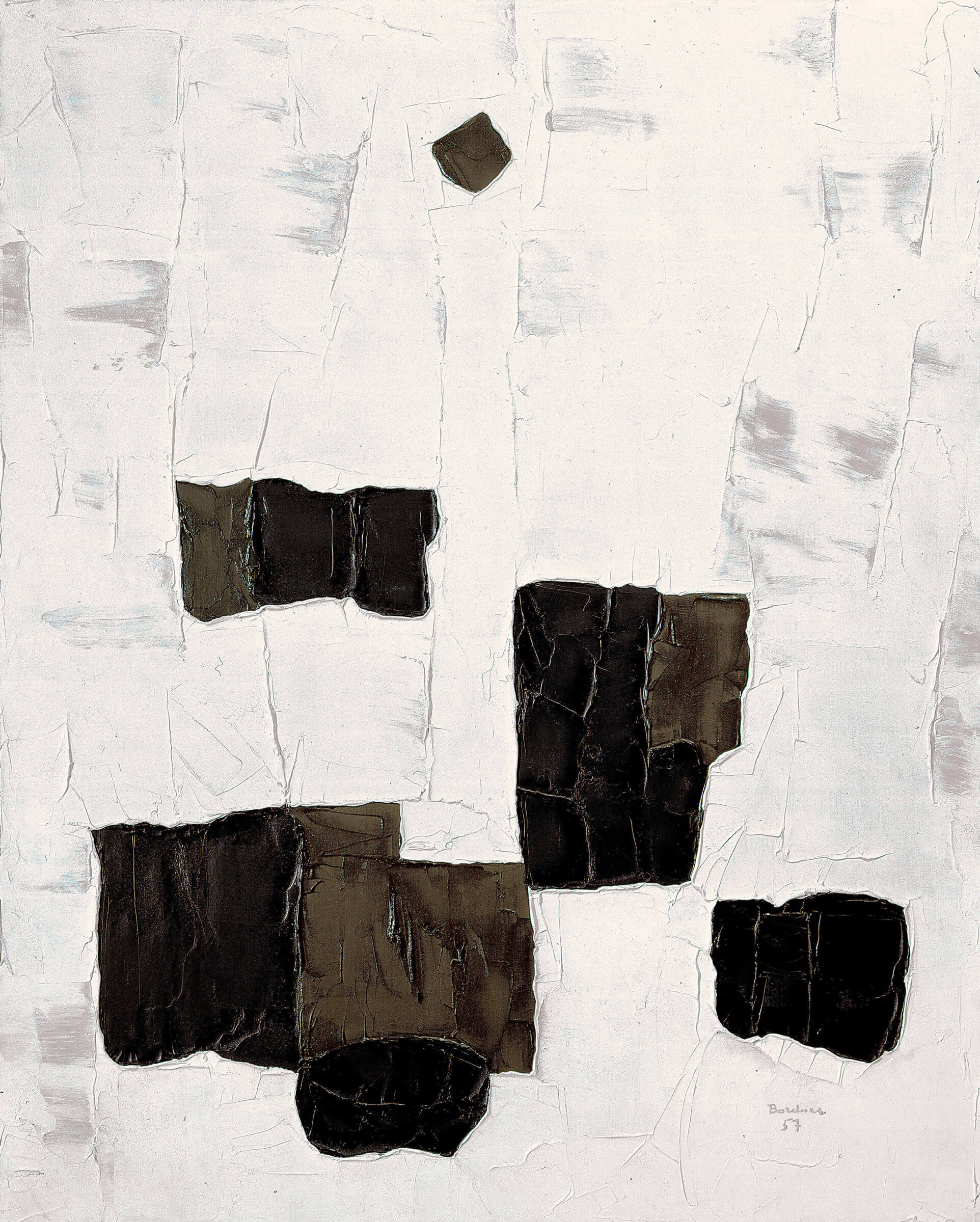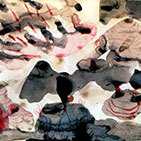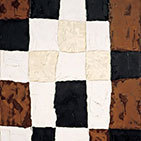The Black Star 1957

Paul-Émile Borduas, The Black Star (L’étoile noire), 1957
Oil on canvas, 162.5 x 129.5 cm
Montreal Museum of Fine Arts
Long considered Borduas’s masterpiece, The Black Star was awarded a Guggenheim International Award shortly after the artist’s death. It had been under consideration for exhibition at the Guggenheim previously, during his lifetime. Writing on January 2, 1958, to Louis Archambault, who was responsible for the Canadian contribution to the Guggenheim competition, Borduas speaks of The Black Star as “a canvas from last winter,” and therefore characteristic of the period when he returned to painting in 1957 following the interruption caused by his travels. He expresses the intention to “submit to the jury a canvas from last year… entitled The Black Star.” But the jury gave precedence to a submission by Jack Shadbolt (1909–1998), and the posthumous prize was not awarded until 1960.
The painting displays the synthesis of Borduas’s plastic language of his Parisian period: oppositions between strong contrasts (black and white) and more subtle ones (black and brown), and a calculated distribution of the black and brown spots on the white ground. The black spots never reach the periphery of the canvas but remain contained within the pictorial plane, thus ruling out a reversible reading (black on white or white on black). The suggestion of movement that emerges within the white ground by following the folds created by the palette knife are equally characteristic of Borduas’s work at this time.
We are thus invited to contemplate a “black star” detaching itself from a white sky—the reverse of the black sky to which we are accustomed. In 1957 Borduas could not have guessed at the existence of what astronomers have been calling “black holes” since the 1960s. He created a poetic image of them avant la lettre, which recalls the words of one of the great poets of Quebec, Saint-Denys Garneau: “We decided to create the night / For a single small difficult star.”

 About the Author
About the Author
 More Online Art Books
More Online Art Books
 Acknowledgements
Acknowledgements